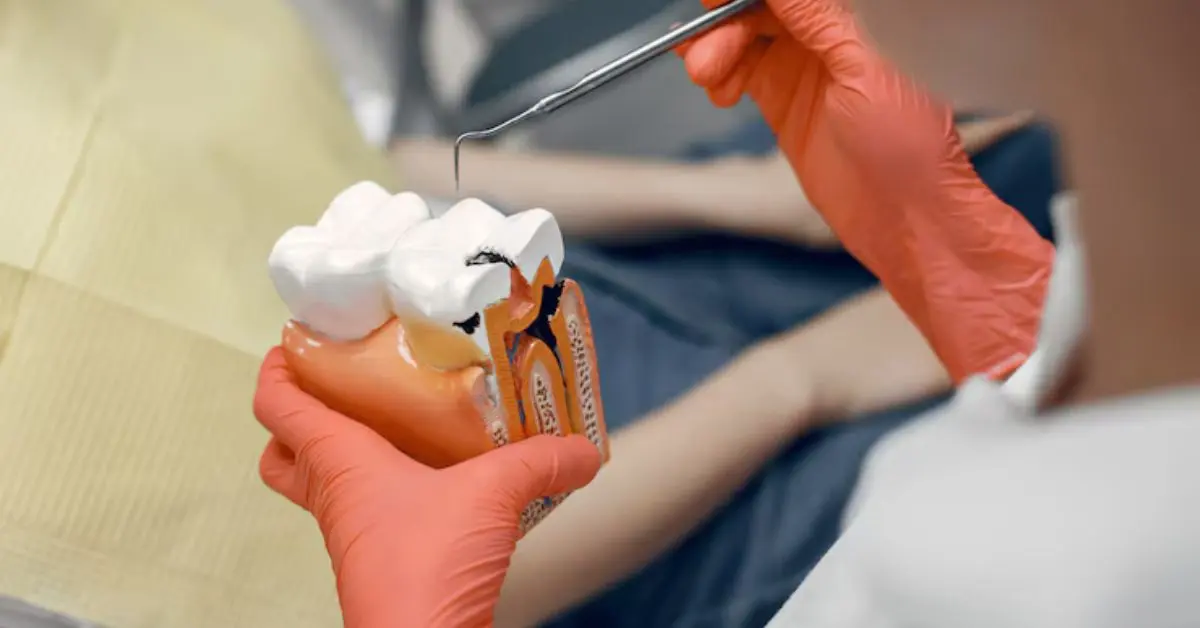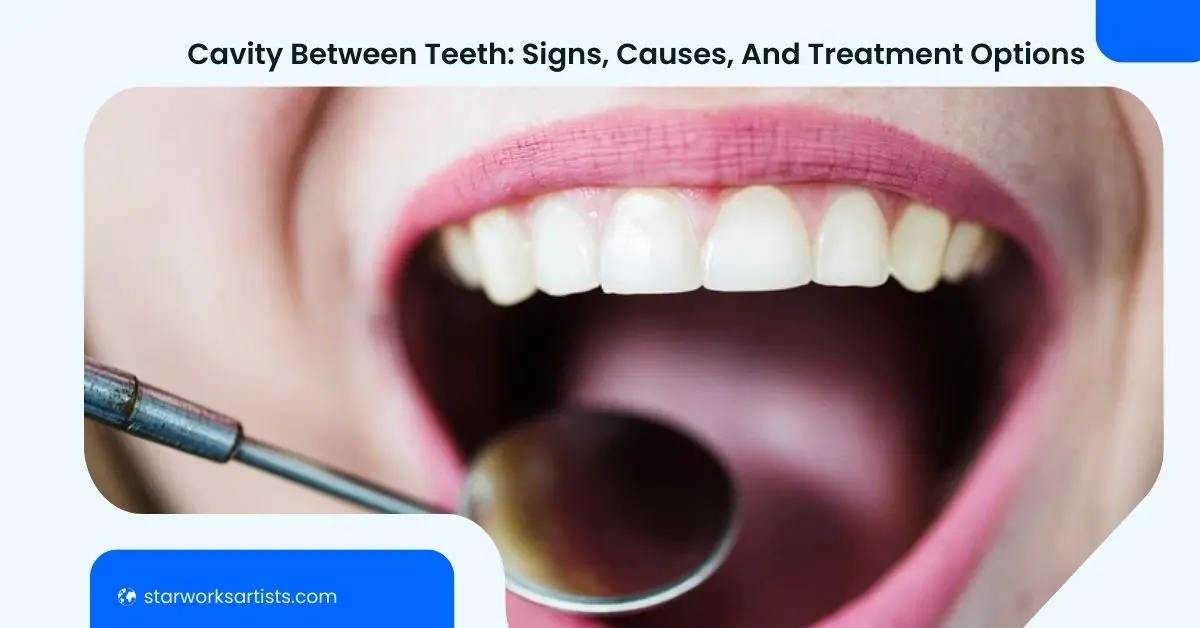Maintaining good oral health is essential for overall well-being. Our teeth play a crucial role in chewing, speaking, and contributing to our overall appearance. However, despite our best efforts, dental problems such as cavities can still arise. Cavities, also known as dental caries, are one of the most common chronic diseases affecting individuals of all ages. According to the Centers for Disease Control and Prevention (CDC), “Cavities are one of the most common chronic diseases in the United States.”
Key takeaways:
What Is A Cavity?
A cavity is a permanent damage to the hard surface of a tooth, resulting in a small hole or pit. Cavities are caused by a combination of factors, including bacteria in the mouth, frequent snacking, sipping sugary drinks, and not cleaning teeth properly. The National Institutes of Health (NIH) explains, “Cavities are caused by a breakdown of the tooth enamel by acids produced by bacteria in the mouth.”

Bacteria found in the mouth feed on the sugars and starches present in the foods and drinks we consume. As these bacteria metabolize the sugars, they produce acids that attack and dissolve the tooth’s mineral structure, leading to the formation of a cavity.
Signs And Symptoms Of A Cavity Between The Teeth
Cavities can occur on any surface of the tooth, including between teeth, which are known as interproximal cavities. These cavities are particularly challenging to detect and treat due to their hidden location. According to Dr. Sarah Jebreil, a renowned dentist and author, “Interproximal cavities are often asymptomatic in the early stages, making them difficult to detect without regular dental check-ups.”
Here are some common signs and symptoms that may indicate the presence of a cavity between teeth:
- Tooth sensitivity or pain when consuming hot, cold, or sweet foods and drinks
- Visible holes or pits in the teeth
- Discoloration or dark spots on the tooth surface
- Pain or discomfort when biting or chewing
- Food getting stuck between teeth
It’s important to note that in some cases, cavities between teeth may not exhibit any noticeable symptoms until they have progressed to an advanced stage.
Getting Rid Of Cavities At Home
While home treatments may help prevent new cavities from forming, they are generally ineffective in eliminating existing cavities. However, some methods may help remineralize weakened areas of the tooth enamel before a cavity develops. Here are some potential home remedies:
- Sugar-free gum: Chewing sugar-free gum after meals can help stimulate saliva production, which can help neutralize acids and remineralize enamel.
- Vitamin D: Vitamin D plays a crucial role in calcium absorption, which is essential for strong teeth. Foods rich in vitamin D, such as dairy products, fatty fish, and fortified cereals, may help promote remineralization.
- Fluoride toothpaste: Brushing with fluoride-containing toothpaste can help strengthen and remineralize tooth enamel, making it more resistant to acid attacks.
- Oil pulling: This ancient practice involves swishing oil (such as sesame or coconut oil) in the mouth for a few minutes, which may help reduce plaque and bacteria levels.
It’s important to note that while these home remedies may be beneficial in preventing cavities, they cannot replace professional dental treatment for existing cavities. As stated by the NIH, “Once a cavity forms, it is permanent and requires professional treatment from a dentist to remove the decay and restore the tooth.”
Related: Cavity Vs Stain: What’s The Major Difference?
Treating Cavities
If a cavity between teeth is detected, professional dental health treatment is necessary to prevent further progression and potential complications. The type of treatment recommended will depend on the severity of the cavity. Here are some common treatment options:
- Fluoride treatment: If the cavity is caught in its early stages and has not penetrated the dentin layer, your dentist may recommend a fluoride treatment to remineralize the affected area and arrest the decay process.
- Dental filling: For cavities that have reached the dentin layer, your dentist will likely recommend a dental filling. This procedure involves removing the decayed portion of the tooth and filling the area with a dental material, such as composite resin or amalgam.
- Root canal treatment: If the cavity has extended to the inner pulp of the tooth, a root canal treatment may be necessary. This procedure involves removing the infected or inflamed pulp, cleaning and disinfecting the inside of the tooth, and sealing it with a filling material.
- Dental crown: In cases where a significant portion of the tooth has been damaged by the cavity, a dental crown may be recommended. A crown is a tooth-shaped cap that is placed over the remaining tooth structure to restore its shape, strength, and appearance.
- Tooth extraction: In severe cases where the tooth cannot be restored, extraction may be the only option. This is typically a last resort when other treatment options are not viable.
As mentioned by the CDC, “Treating cavities early is more affordable than waiting until there is pain or tooth loss.”
Prevention
Prevention is key when it comes to maintaining good oral health and avoiding cavities, including those between teeth. Here are some preventive measures recommended by dental professionals:
- Proper oral hygiene: Brush your teeth twice a day with a fluoride-containing toothpaste and floss daily to remove plaque and food particles from between teeth. Dr. Jessica Lee, a prominent dental hygienist, emphasizes, “Flossing is crucial for preventing cavities between teeth, as it removes debris that brushing alone cannot reach.”
- Dietary habits: Limit your consumption of sugary and acidic foods and drinks, as they contribute to the formation of cavities. Choose tooth-friendly foods like fruits, vegetables, and dairy products.
- Dental sealants: Consider getting dental sealants applied to the chewing surfaces of your molars and premolars. Sealants act as a barrier, protecting these teeth from plaque and bacteria.
- Regular dental check-ups: Visit your dentist regularly for professional cleanings and examinations. This allows for early detection and treatment of any cavities or dental issues.
As stated by the NIH, “Good oral hygiene habits and regular dental visits are the best way to prevent tooth decay and cavities.”
Conclusion
Cavities between teeth, or interproximal cavities, are a common dental concern that can lead to more serious problems if left untreated. While they may not always exhibit obvious symptoms, regular dental check-ups and proper oral hygiene habits are crucial for early detection and prevention.
If a cavity between teeth is identified, seeking prompt professional treatment is essential to prevent further damage and complications. With the right preventive measures and timely dental care, cavities between teeth can be effectively managed, ensuring the long-term health and function of your teeth.
FAQs
Yes, cavities between teeth can be fixed through various dental treatments, such as fillings, crowns, or root canal therapy, depending on the severity of the cavity. Early detection and treatment are crucial to prevent further damage and potential tooth loss.
Unfortunately, home remedies alone cannot eliminate existing cavities between teeth. Professional dental treatment is necessary to remove the decayed portion and restore the affected tooth. Your dentist may recommend a filling, crown, or root canal treatment, depending on the extent of the cavity.
In the early stages, a cavity between teeth may not cause any noticeable symptoms. As it progresses, you may experience tooth sensitivity or pain when consuming hot, cold, or sweet foods and drinks. You may also feel discomfort or pain when biting or chewing.
The procedure itself is typically not painful, as your dentist will administer local anesthesia to numb the area around the affected tooth. You may experience some mild discomfort or sensitivity after the anesthesia wears off, but this is usually temporary and can be managed with over-the-counter pain medication.
It is not recommended to leave a cavity untreated for an extended period, as it will continue to progress and cause further damage to the tooth structure. If left untreated, a cavity can eventually reach the inner pulp of the tooth, leading to severe pain, infection, and potentially requiring more extensive treatment or even tooth extraction.

